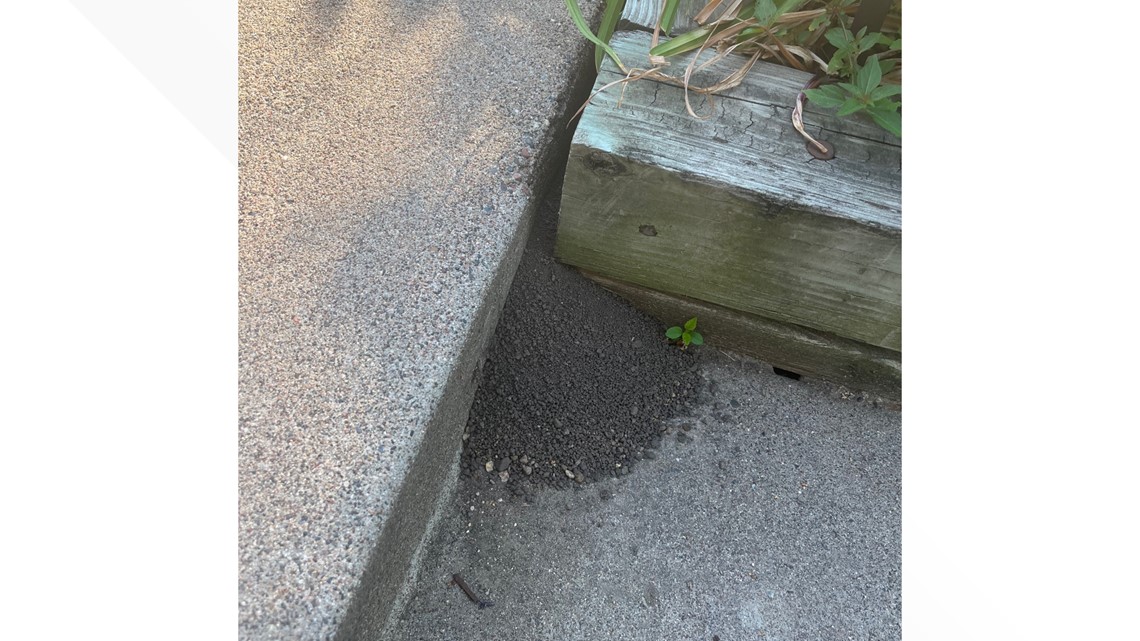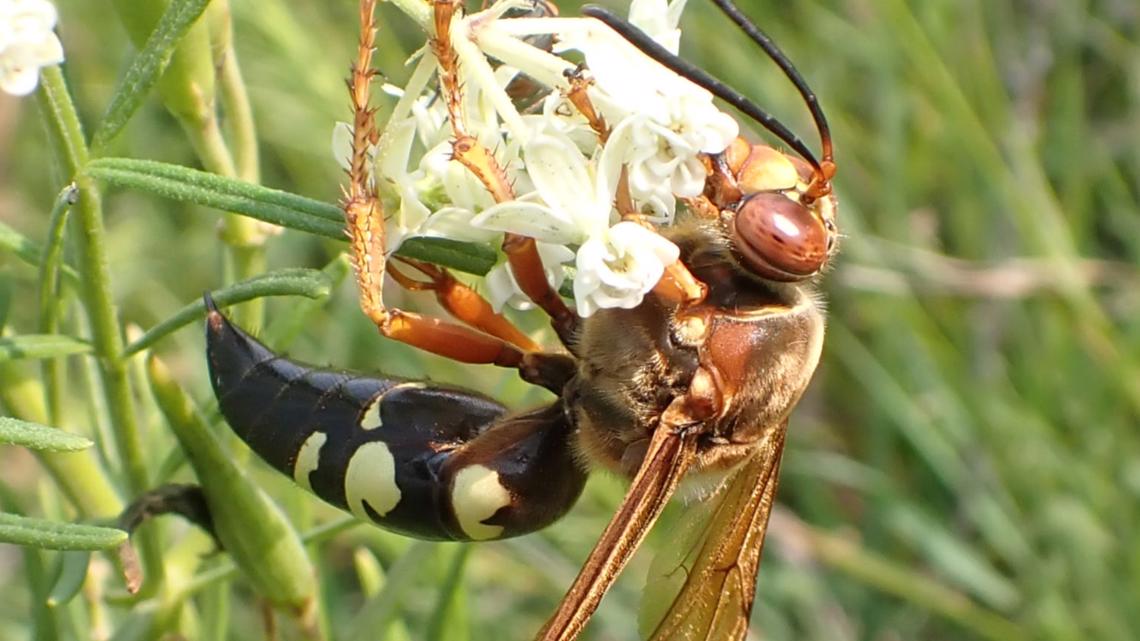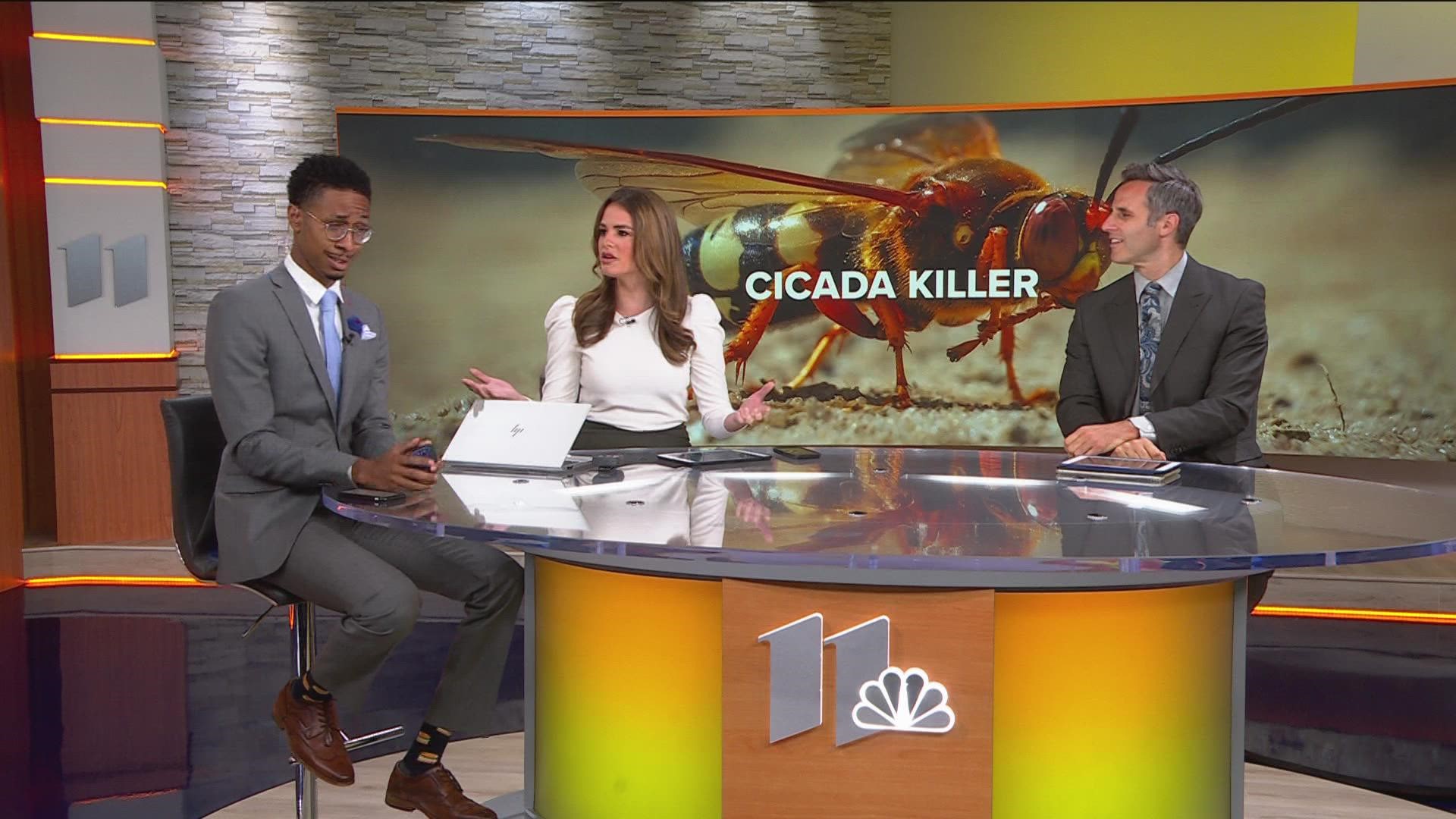MINNEAPOLIS, Minn — It's never fun running into a swarm of bees or wasps, but nothing has quite compared to the cicada killer wasp.
At least, that's the case for KARE 11's Alicia Lewis, who has found at least 12 of their nests in her yard... so she decided to do some digging.


What she originally thought was the infamous "murder hornet" based on its size, turned out to be a cicada killing wasp (Sphecius speciosus) which is a ground-nesting, solitary wasp, native to Minnesota.
According to Jessica Petersen, the Invertebrate Ecologist with the Minnesota Department of Natural Resources (DNR), cicada killers may look intimidating, but are not dangerous to people... just to cicadas.
"They do kill cicadas, so they are not going to hurt people. So unless you are a cicada you are safe," said Petersen. "The males will sometimes dive bomb people but they don’t have stingers so they can't hurt you. And the females go out and forage so that they feed to their young that are living under the ground in those tunnels."
Petersen says the females do have stingers and once they catch a cicada, they paralyze them, drag their large bodies into their burrows and then lay their eggs. The larvae hatch and then feed on the paralyzed cicada until they develop into adults.
Petersen says more Minnesotans are noticing these nearly two inch-long wasps more than ever before.
"I think they can build up year after year, and the reason they are building their nest there is that there is a good food source for them," Petersen said. "You have cicadas too, which I am sure you can hear in the evening, so that’s why they are there. They probably like the soil too. It's easy for them to excavate if it's sandy and a south facing slope."


According to Jim Walker, an entomologist with the University of Minnesota Extension, here's how you can identify them:
- Cicada killers are large, about 1½ inches long
- They have a black abdomen with yellow bands
- Black and reddish-brown thorax (middle section of body, between the head and abdomen)
- Amber-colored wings
- Reddish brown legs
Cicada killer adults are active in July and August.
So, what should you do if you have these giant wasps tunneling through your yard, building large nests? Petersen says to do nothing, because they will be gone by the end of the summer.
If you are not able to tolerate the wasps... the U of M Extension offers these tips to treat the nests:
- Apply an insecticide into each individual nest entrance
- Dusts are most effective, but sprays can help decrease the numbers
- Be sure the product is labelled for use on turf. Effective active ingredients include permethrin and carbaryl
Watch more KARE11 Sunrise:
Watch the latest coverage from the KARE11 Sunrise in our YouTube playlist:

